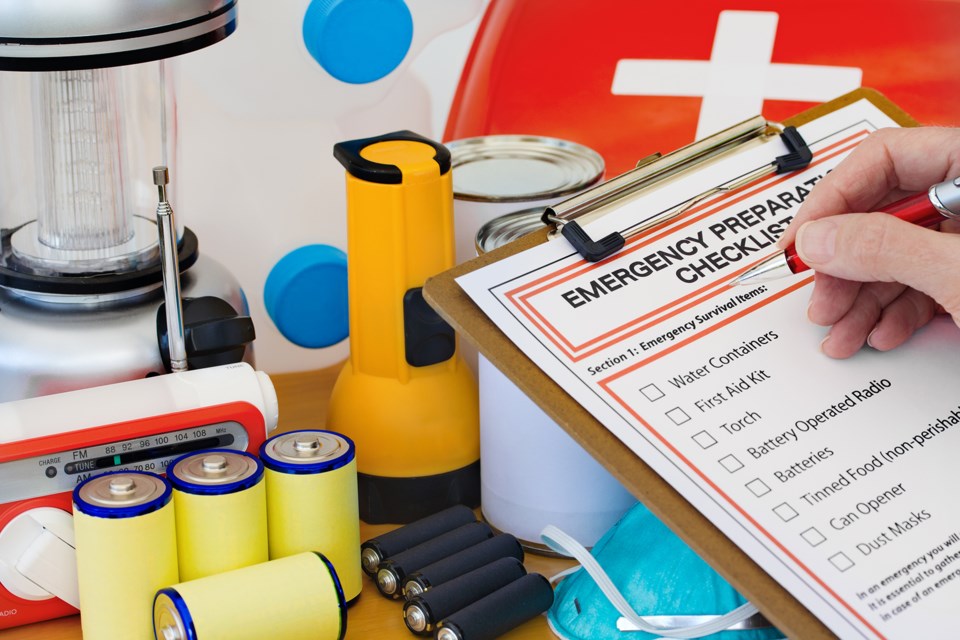With high winds and over a foot of snow in only 24 hours, power went down for almost a full day in some parts of the city as crews toiled through the tough conditions.
The question is, what if had been far, far worse?
As in Quebec Ice Storm of 1998 worse, where power was out for over a week and eventually 35 people died?
Would you be prepared?
That's where the annual Emergency Preparedness campaign (held May 3-9) comes into play, with the Moose Jaw Fire Department (MJFD) among many organizations all over the world aiming to see households put together 72-hour survival kits designed to keep them supplied and safe in case of a disaster.
“It's everything from the pandemic that's going on now to the winter storms we had or a tornado, flood, anything like that,” said MJFD deputy chief Mike Russell. “How are you going to make yourself self-efficient in that situation?”
The first step is gathering supplies – non-perishable food, water, a flashlight and extra batteries, a portable radio and a means to keep your phone charged for messages and alerts. A comprehensive list can be found by clicking here.
Those who want to make sure they have power can purchase portable generators, although Russell warns to keep said items and all cooking appliances in a well-ventilated area to avoid noxious gases.
“Even since the storm we had last winter, it's ironic how many people I talked to who had put together a kit or even had portable generators wired into their house and electrical systems, so they have power and heat at least,” Russell said.
Emergency preparedness also extends to pets, with fire departments throughout the province partnering with the SPCA to make sure family critters are also included in preparations, with a full checklist available here.
“Have a back-up plan for your pets, have someone available to check up on them or retrieve them if you can't, if you were out of town or at work and something was to happen,” Russell said. “And especially the area we're in, there's lots of livestock and domestic animals as well, and we want to protect them just as much as anybody else.”
And last but not least, have a plan. Know where to be, where to go and what to do when things get that bad.
“Speaking with your family about it only takes five minutes,” Russell said. “The kids could be at school, you could be at work, it's all those different things. So it's understanding what you're doing and what you're being told to do, and making sure everyone in your family knows, too.”
The good news is that emergency preparedness is continuing to grow at an impressive rate as more and more people learn just how important being ready can be.
“Even the small ones that don't last long, we're seeing improvement, we know we're progressing and moving forward and emergency preparedness is continuing to grow and grow,” Russell said. “People are starting to realize, we're getting away from the concept of 'it doesn't happen to me, it happens to someone else', and that's great. It shows that people are buying in.
“It's just taking some time and it could be life-saving.”




